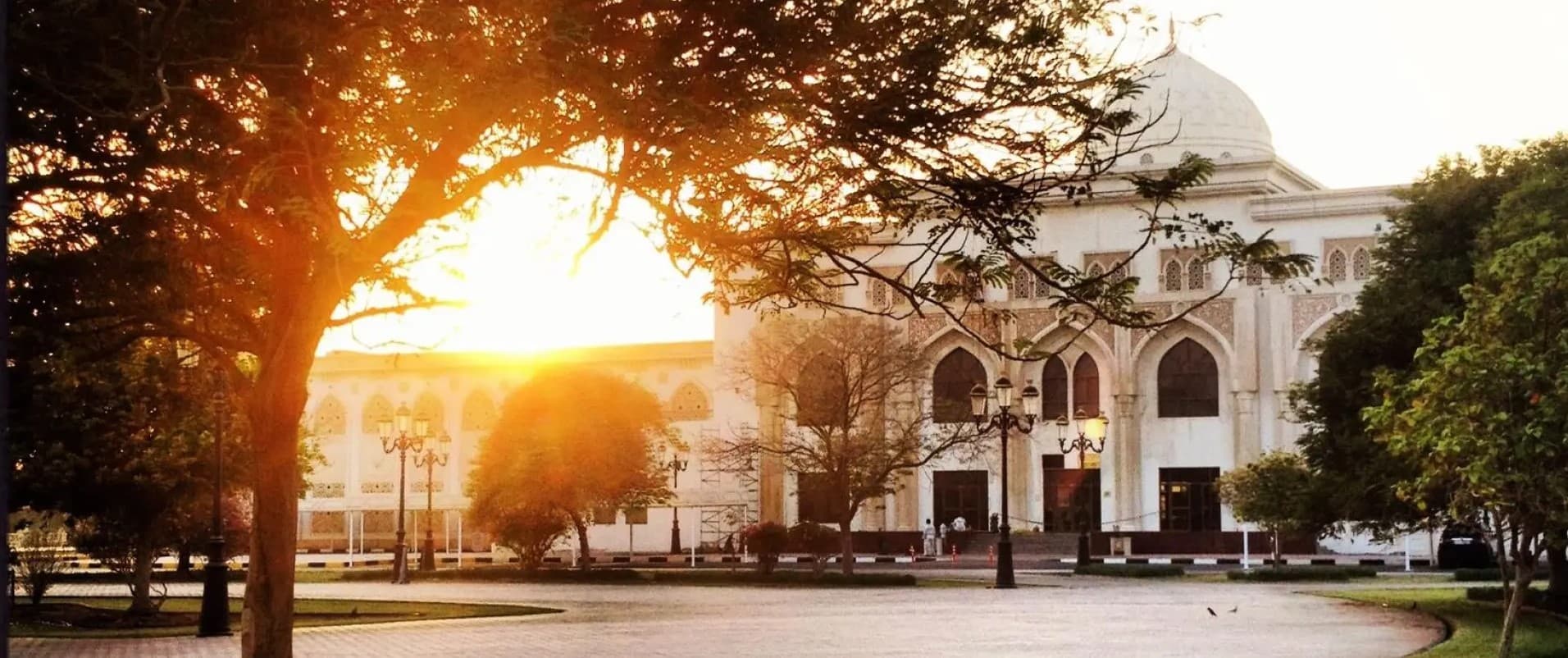Combating Disaster and Climate Change in Arid Regions Using Geospatial Intelligence and Collaboration, Third Bi-Annual Workshop
University of Sharjah
The future of Earth is at stake as the world grapples with a climate changing at rates unprecedented in human times. Climate change is fueling a growing gulf of economic and social inequity, shrinking the scope of biodiversity, turning fallow the agricultural lands needed to feed humanity, and eating away at our common heritage through the destruction of world heritage sites. These challenges manifest as massively disruptive forces in the lives of individuals and communities which, through a multitude of mechanisms ranging from dysfunctional governance to unhealthy industrial practices, feed back into anthropogenic induced climate change and accelerate the incidence and severity of disaster. Arid regions are particularly susceptible to climate change due to natural scarcity and fragility of resources and small perturbations in ecosystems, climate, and human activities are more easily magnified and may feed into disaster.
Great uncertainty surrounds the risk and consequences of such disasters. Disaster managers, scientists, decision makers, and leaders must increasingly make decisions about how best to plan for, reduce the risk of, respond to, and recover from disaster with incomplete and sometimes inaccurate information. This paradigm shares many analogies with national defense concerns. This includes the need for an “intelligence” based approach. Space- and ground-based remote sensing systems and data, geographic information systems (GIS), location-based visualization, and the ability to analyze massive datasets on a spatial basis have proven to be invaluable resources in combatting disaster. This is especially true when geography is used as the “lens” through which disaster problem sets are viewed. The approach elevates an “intelligence” based approach to “geospatial intelligence”, or GEOINT, while shifting the domain from defense to disaster.
Numerous UN-SPIDER technical advisory missions have been charged with assessing the ability of developing nations to implement GEOINT solutions to combat disaster. The consistent theme repeated in nearly every study indicates that the failure of GEOINT solutions to aid in disaster management is not due to a lack of capacity for the science and technologies involved, but rather a lack of coordination across the full potential gamut of stakeholders. Collaboration across organizational, governmental, and disciplinary boundaries, when performed using GEOINT, is essential to disaster resilience. Moreover, it is critical if the agreed upon goals established by the global community via the Sendai Framework for Disaster Risk Reduction, the Paris Agreement, and United Nations Sustainable Development Goals are to be reached.
This meeting has three desired outcomes:
- To develop capacity for the use of space-based and geospatial technologies to combat climate change, crisis, and disaster in the Middle East and North Africa region.
- To develop long-standing leadership and partnerships from within the Middle East and North Africa region which address the risk and consequences of climate change, disaster, and crisis.
- To enable collaboration and the sharing of expertise in support of disaster, climate change, and crisis in the Middle East and North Africa region.
Click here for further details of the conference.

Important Dates
Don't miss out! Stay on track with key deadlines and academic breaks at the University of Sharjah. For all major dates, see our calendar of academic events.


General Enquiry
Seeking more information? Our dedicated team is ready to address your queries. Connect with us through our general inquiry channels for prompt and insightful assistance.
Stay Connected
Combating Disaster and Climate Change in Arid Regions Using Geospatial Intelligence and Collaboration, Third Bi-Annual Workshop
